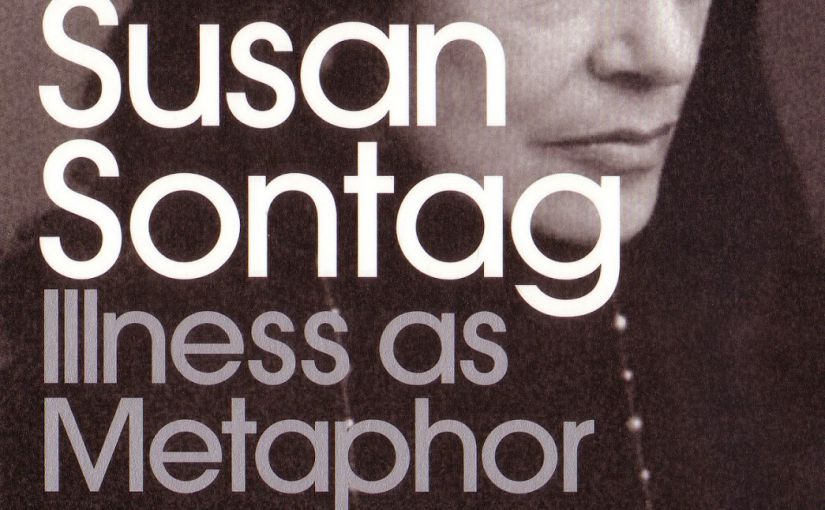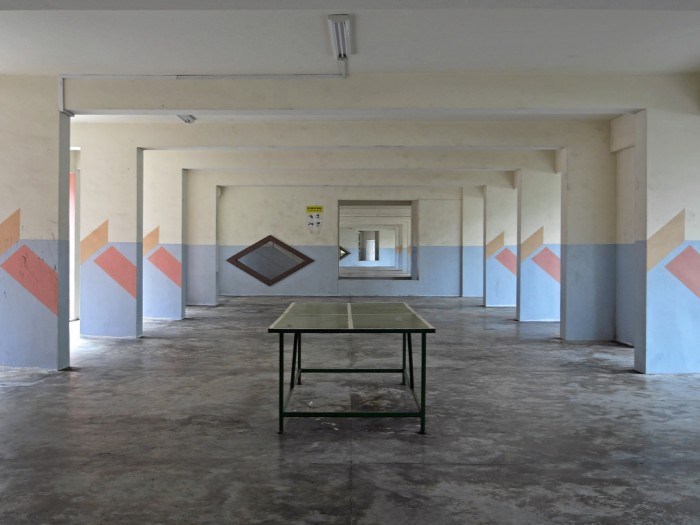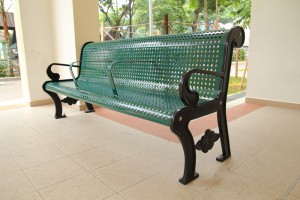Author: Elizabeth
Protected: Research Snippets 1 (Pw: FYP2016)
Illness as metaphor – an analysis | Personal thoughts
“Illness is the night side of life, a more onerous citizenship. Everyone who is born holds dual citizenship, in the kingdom of the well and in the kingdom of the sick. Although we all prefer to use the good passport, sooner or later each of us is obliged, at least for a spell, to identify ourselves as citizens of that other place.”
–Sontag, S. (1978). Illness as metaphor
In her book, Illness as metaphor by Susan Sontag, Sontag compares between Tuberculosis and Cancer and how different people and societies perceive the two diseases.
While thinking about my topic, I was comparing the perceptions between mental and physical disease. I never really thought much about the perceptions between physical diseases and how within that category itself was a myriad of perceptions going between different illnesses. How an illness could be perceived as almost tragically beautiful while being a symbol of rot and decay.
But first, what is a metaphor?
metaphor
noun 1. a figure of speech in which a term or phrase is applied to something to which it is not literally applicable in order to suggest a resemblance, as in “A mighty fortress is our God.”.
2. something used, or regarded as being used, to represent something else; emblem; symbol.
______
For both cancer and TB, they are illnesses that are still prevalent and dangerous today with how difficult it is to treat them especially in their terminal stages. I found it interesting how TB was perceived by societies back centuries ago was almost like how cancer is seen today. The prevalence of it, the inevitability of a slow death looming, and the lack of comfort knowing that there’s no absolute cure for it yet, are big things that societies have to deal with emotionally.
It made me wonder about the human obsession with metaphors: the romantisation and personification of illnesses. Is it the fear of the unknown? The need to control and understand something that is always way beyond us? To give disease another attribute, to compare it to something we already know, do we understand it better or do we further alienate it from what it really is?
Are the metaphors in some way a sort of comfort? It seems so when Sontag brought up examples the melancholy present in TB patients, was written and seen as a positive, beautiful trait. Were they written by patients of TB or the people around them, trying to find positivity in grief.
Are the metaphors part of superstition? Once again Sontag brought up how TB as a “wet-based” disease, could be cured by moving to dryer locations, (a typical scene in victorian-era novels).
Are the metaphors a critique on our society? How Cancer is seen as a product of our excess consumerist culture, through over-eating, over-exerting our bodies from work.
Sontag’s overall argument is this:
“ My point is that illness is not a metaphor, and that the most truthful way of regarding illness—and the health- iest way of being ill—is one most purified of, most resistant to, metaphoric thinking. “ – Susan Sontag
Many critics have called Sontag’s book as liberating and empowering, powerful for arguing against fear inducing metaphors that inhibits people to seek recovery. By comparing TB and Cancer, two similarly perceived diseases, one of which is less of a threat today as the other, Sontag shows the absurdity of thoughts past and how thoughts of the present are and will be.
So what about mental health? I’ll be writing on that more on my analysis on A Philosopher’s Madness by Lishan Chan in my next post.
________
Total Biblography of books|articles|etc read ( for my own reference):
Sontag, S. (1978). Illness as metaphor. New York: Farrar, Straus and Giroux.
Flessner, C. A., Woods, D. W., Franklin, M. E., Cashin, S. E., & Keuthen, N. J. (2007). The Milwaukee Inventory for Subtypes of Trichotillomania-Adult Version (MIST-A): Development of an Instrument for the Assessment of “Focused” and “Automatic” Hair Pulling. Journal of Psychopathology and Behavioral Assessment J Psychopathol Behav Assess, 30(1), 20-30. doi:10.1007/s10862-007-9073-x
What is Trichotillomania? – The TLC Foundation for BFRBs. Retrieved September 01, 2016, from https://www.bfrb.org/learn-about-bfrbs/trichotillomania
Trichotillomania. Retrieved September 01, 2016, from http://onlinelibrary.wiley.com/doi/10.1111/j.1529-8019.2008.00165.x/full
Hair Dictionary | reflections
(Some context: this was the work I did for Astrid’s VC4 class where we are to create a dictionary for our potential FYP topics)
Trichotillomania is a pretty small topic but hair, woah, hair is a huge huge topic.
Love it, hate it or fear it, hair has been so prevalent in human cultures over at our span of time on earth that it is intertwined in so much of the human condition. So much complexities and ironies lie amongst a pile of dead cells growing from your scalp. It is never “oh, it is just hair”.
I separated my dictionary into two parts. The first a preface of sorts. Why do I want to do this project, why hair? It was more on a cathartic self- expression and exploration piece and while doing it, I realised how much hair had played in my struggle for approval, an identity, and self love growing up. I imagined that this preface as a documentation of me treating myself as a word, what defines me, what are my origins, what do other people define me etc.
I’ve chosen this part to be illustrated as I wanted it to be 100% me and with illustration something that I am most comfortable with, it just felt natural expressing myself through this medium.
The second part of the dictionary is a tad more straightforward, I’ve collected main words and from those main words and its definitions, I categorised events, knowledge, cultures , etc etc into those parts. At the end of the book there are a list of artists that inspire me and how they treated the medium of hair or deal with issues of anxiety, identity and trauma.
As much as the first part is 100% me, this component is 100% not me, in the sense that it contains themes, ideas and culture that are not mine. While the book is clean for now, I’ve included lots of white spaces to eventually turn this book into something JJ Abrams did for his book titled S.
The additional notations, highlighting scrapbooking done in a single book all by different personas and minds is just beautiful to me. It reminds me of the past where we could write and notate on books we own. I find the process slowing allowing more of my personality and thoughts into the book, slowly digesting these information into something that could amplify my own.
I am super excited to do so to my dictionary once I get more and more information about my topic during my FYP process.
For the fun of it, to probably just start off FYP where this project ends, I’ve also included a hair-o-graphics which documents (roughly) the hairstyles that I’ve had over the years and why they are done so. It compliments the first part of the dictionary and I guess it helps in explaining Trich to most people.
Overall, this dictionary experience is as cathartic as it is rough to make, over 80 pages in and I still feel that there are still a lot that I have not discovered and read about yet. Even so, it made me understand why people treat hair with almost god like importance or why they choose to remove it completely. Our human obsession with those dead cells is never only just hair but rather it as a common medium to express the multiple facets and complexities of our emotions.
In the end, it is only just hair right?
Protected: words words words
Facebook : a one day affair that went south
When I first planned on my dictionary, I wanted to be on what people saw of me, so I went on facebook.
The status went as planned:
” Hey guys, if you don’t mind, could you comment below some words that you feel describes my personality. Spam if you want, don’t spam is also fine with me, I’mma chill yo!”
It’s simple, chirpy and casual.
The results are as shown,
blur blur
Artsy fartsy
Total commitment
Creative, talented
Water bottle and math class
Lovable, polite and laid-back And talented!!
Talented auntie!
Passionate. (When you talked about certain people while at Cambodia.)
Sweet,lovable,talented
cutie pie
Bubbly/chirpy/helpful/funny (I know I don’t know you well enough but this are what I’ve noticed haha)
You dig deeper (like how you choose to look past the lipstick and focused on his dedication towards his work)
Creative, talented
Free spirited haha
I’ve realised that in some way or another, to an outsider that knows absolutely nothing about me, some comments are not going to make sense to them.
As such I’ve separated each comment by who the person is, the role they play in my life, the memories that we share to understand what compelled them to spend time to comment on this silly facebook post.
I feel a tad mean in saying this, spare for a few select people, those who commented are people I spend less than 3 hours with in a week. Some are people who I have not talked to for years! I appreciate their kindness though.
Of course, as me, I don’t really feel the same way about myself as they feel about me. As much as I want to sustain it, the positivity in me is waning, lately it feels like I’m trying to be happy mainly for myself rather than for others.
It makes me wonder if people will still see me the same way when I’m no longer cheery.
—–
Anxiety is a rough one to battle.
It’s not something that I’d want to profess, it’s not something I’d like to hide either.
My horrible struggles with trichotillomania is not helping either.
What the heck is trichotillomania?
Google image this stuff and be prepared to cringe a little, or a lot, it’s all up to you.
Wikipedia it and you’ll get this:
Trichotillomania is defined as a self-induced and recurrent loss of hair. It includes the criterion of an increasing sense of tension before pulling the hair and gratification or relief when pulling the hair.
Anxiety, depression and obsessive–compulsive disorder are more frequently encountered in people with trichotillomania. Trichotillomania has a high overlap with post traumatic stress disorder, and some cases of trichotillomania may be triggered by stress.
Another school of thought emphasizes hair pulling as addictive or negatively reinforcing as it is associated with rising tension beforehand and relief afterward. A neurocognitive model — the notion that the basal ganglia plays a role in habit formation and that the frontal lobes are critical for normally suppressing or inhibiting such habits — sees trichotillomania as a habit disorder.
—————
“Eh, so when you are not stressed you don’t pull is it?”
Yup. So you could say that it comes in stages, the baldness that comes with stress and the regrowth that comes in an low stress environment.
“so don’t pull larh!”
The thing is that it’s hard not to. It’s habitual and it’s actually comforting to some level, it’s like relieving an itch.
“will there be a point where your hair don’t regrow again”
Here is the scary part, yeah, there’s a chance! As someone who dislike deadlines and permanence, here goes something that gives me anxiety.
Now my anxiety have anxieties. heh.
“Do you still go to the hairdressers?”
I haven’t for slightly over a year and I’d like to, someday.
“Don’t stress! Don’t stress!”
I’ll try, thank you.
————–
While researching on Van Gogh, more or less that one guy we all wished we could travel back in time to talk to and comfort, I came about this quote from him,
What moulting is to birds, the time when they change their feathers, that’s adversity or misfortune, hard times, for us human beings. One may remain in this period of moulting, one may also come out of it renewed, but it’s not to be done in public, however; it’s scarcely entertaining, it’s not cheerful, so it’s a matter of making oneself scarce.
Dear Data postcard | wastographics
(N.B I haven’t been tagging these posts right last time hence I’m reuploading them in hopes that they appear in the class pages again!)
I like the idea of accumulation small things leading up to larger things. As such I thought about the butterfly effect / chaos theory that Joanne had discussed for her time project, the choices of one person or thing will eventually lead to another and accumulate to something.
When I first pitched it to my partner about this, she felt that I was a little pushing the blame to others and I was like yeah …. sorta
Legend
While doing this, I’ve decided to note the places I’ve spent the most time in as I wanted to prove that going out would be a large factor as to waste consumption but I actually realised having takeouts or tabaos instead is a bigger role player ( for that week). So my advice to myself is to cook more ( or at least eat at the restaurant/coffeeshop etc. )
Visuals wise, I’m inspired by spot paintings from artist Damien Hirst in terms of using very colourful dots. I was also inspired by the movement of water droplets coalescing when they merge into one another to become a bigger water blob, as such, instead of using the same size of dots, I decided to vary their sizes according to how much waste was generated to give off the idea of accumulation. I liked how that effects creates a rhythm and flow to the infographics visually.
( originally posted on 25/3/2016.)
Project 1 Time | Final work & Reflections
(N.B I haven’t been tagging these posts right last time hence I’m reuploading them in hopes that they appear in the class pages again! ( please visit my page for a accurate timeline of posts though! )
Now that this project is over, it’s time to reflect. I’ve started his project with a very large and pretty unorganised train of thought. With some self reflection, I’ve decided to define time as a huge muddy sea of constants and variables.
Constants: The locations I visit, the timing of which I take the pictures, the subjects of the photo, the life I live, the society around me, the skies I get to see.
– Routines, structure, the inexplicable movement of time as the sun undoubtedly rises and sets.
————-
Variables: When the wind blows clouds over to cover parts of the sun, when a lady refuse to budge from her spot in my shot. How I see the world in a stressful morning, how I respond to it during a relaxed evening.
– Emotions of mine, emotions of others. The movement of nature, the inevitable bits of chaos.
How do we measure time in Singapore? This question still lingers in my mind.
I believe that in a society so obsessed with constants, are variables the only things left that at least give some idea that time has passed?
If we cannot control constants, we should try to be variables, or at least try to take note of the variables around us.
The Sun will always rise and set, but where its light touches, where a shadow is cast onto the ground. No two photos are the same, no two seconds are the same. Everything is always changing every day, every hour, every second.
The book is hence titled “In the light of” from the idiom,
In the light of something:
considering, because of, taking into account, bearing in mind, in view of, taking into consideration, with knowledge of
The title is a play on the fact that, yeah the photos are of shadows and things that have been under the light of the sun. But also taking into account the life around us, how time passes, how constants drive us, how variations change us and how we feel about those things.
Anyhoo, I’ve included the photo book for you guys to read!
_____________________
A friend told me that my photos reminded her of Edward Hopper‘s works. If you are unfamiliar with his works, Edward Hopper is a American painter who captures scenes and architecture iconic of America’s golden years of the 1920’s to 50’s. The catch is that his works are without a lot of the glitz and glamour that usually comes pre-packaged with these imagery, but it’s not overtly morose either.
Hopper’s scenes usually depict those of people being indoors. White spaces occupy most of the canvas, nearly empty rooms, characters in the painting ignoring one another, geometric landscapes with blocks of sunlight invading the scene… these are common elements in his works.
A sense of isolation, loneliness, melancholy and serenity could be seen in his works.
( One of my favourite works of his is Rooms by the Sea, 1951)
While the reference is unintentional, Hopper had been influential in some way because of how much of his works resonates with me. I’ve always somehow wanted to be in those rooms and scenes he paints because of how quiet, spacious and isolated it all is. I was pleasantly surprised to find a quote from him that accurately explains some parts of my project.
There will be, I think, an attempt to grasp again the surprise and accidents of nature and a more intimate and sympathetic study of its moods, together with a renewed wonder and humility on the part of such as are still capable of these basic reactions.
Pathetic fallacy, chaos theory; check and checked.
Edward Hopper is renowned for his reluctance to discuss himself and his art, Hopper simply summed up his art by stating, “The whole answer is there on the canvas.”
As much as I have lots and lots of themes and ideologies into my work, I think in the most basic reason we do what we do is ultimately for our love for sunlight and how it made a crummy rigid world slightly more beautiful.
As Hopper puts it,
Maybe I am not very human – what I wanted to do was to paint sunlight on the side of a house.
If he’s not very human, I’m not quite sure if I am too.
(Originally posted on 12/3/2016)
Project 1 Time | Process
(N.B I haven’t been tagging these posts right last time hence I’m reuploading them in hopes that they appear in the class pages again!)
Photos Photos Photos!
“Oh dear… Do I have enough content?” Is a number 1 worry of mine working on this project for about 2 weeks and running. Being a subject of 24 hours is bad enough, being a subject of roughly 4 hours a day is worse.
Certain takeaways that I have learnt from taking photos,
1) Do not ever ever ever think to yourself that “it’s alright, it will probably look the same tomorrow anyways”. It wouldn’t, and a perfectly good shot would be gone forever.
2) Shucks that aunty is looking at me weird, maybe I shouldn’t take this shot. (Refer to point 2)
3) Man! I’m really a hermit huh!
Points 1 and 2 made me think about the butterfly effect or chaos theory:
As American mathematician and a pioneer of chaos theory, Edward Norton Lorenz’s explains,
When the present determines the future, but the approximate present does not approximately determine the future.
What this means is that a single small element of the past could lead to a larger chain of events and changes that is beyond our predictions.
Sure, that day could be sunny, but I could leave the campus later that day, or my phone could have not enough battery to last for the day etc etc…
Several factors have to come into play including the limits that I have imposed upon myself while taking the photos.
a) It must be a sunny day. (it made me hate rainy/ cloudy days)
b) My phone, of which I take the photos from, have to have enough battery/ memory space to take photos
c) No one must be in the photo ( personal preference)
d) I do not have a shaky hand while taking the photos
This inspired me to also document these factors, how many elements does it take to be able to document a beautiful mundane scene? How much of it is fate, how much control I could I have over this scenario?
These photos in some way or another feels to be the collaboration between fate, time and me. After all, I’m just a tiny person trying to capture little scenes of time against the larger factors of the universe that I can never control.
I’ve also created a routine map of the places I often or only visit in a week. (Click the photo for a bigger view.)
It looks really empty for now. Perhaps I should add a few more data such as time spend travelling in those routes, when I’d usually go these places etc etc.
(originally posted on 4/3/2016)
Issues : Hostile architecture & Void Decks
To be honest, I’ve never thought that hostile architecture would make its way to Singapore. There would have been no want nor need to implement these structures. After all, homeless rates are low and void deck weddings, funerals and sports are still a thing. In a country that focuses on community and heart, it would be ridiculous to set up structures that blatantly shoos people off “traditional” communal spaces, right?
When the barriers were set up, I guess it was more disappointment than shock. While it sounded like warning bell to most, some highlighted that it has been going on for quite a while. Then again, it has been done ever so subtly that I’ve come to realise certain changes only after it was highlighted by online communities.
An example would be the removal of that classic rounded stone tables, and them being replaced by steel benches with additional handles placed in the middle other than simply on the sides. They hence made it impossible for one to lie down on them or for people to gather together.
Tolerance, heritage, image and rules are becoming interlinked issues in Singapore. Will this be a one-off thing or there’s more to come out of this, we shall see.
Source Dumps for further reading:
http://www.theguardian.com/artanddesign/2014/jun/13/anti-homeless-spikes-hostile-architecture
http://www.theguardian.com/society/2015/feb/18/defensive-architecture-keeps-poverty-undeen-and-makes-us-more-hostile
http://www.alternet.org/civil-liberties/5-ways-we-design-our-cities-make-them-inhospitable-human-life-photos
http://myhdbtown.blogspot.sg/2007/11/solve-old-folks-playing-cards-at-void.html
https://gintai.wordpress.com/2012/08/08/they-solved-the-homeless-sleeping-in-public-places/













